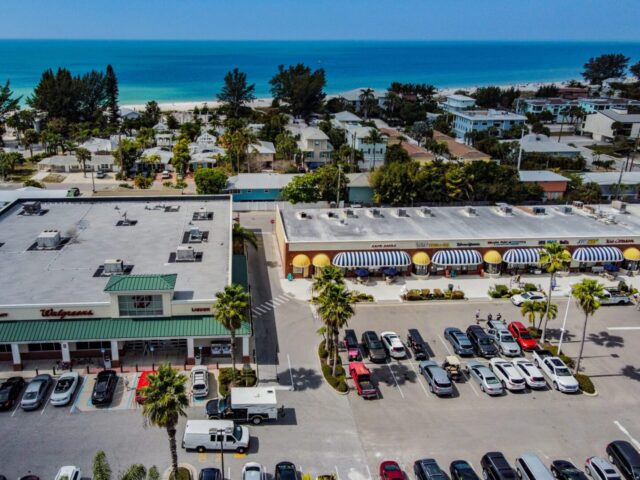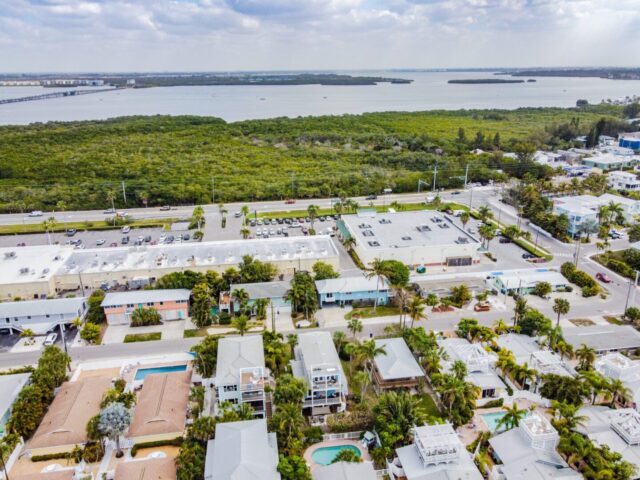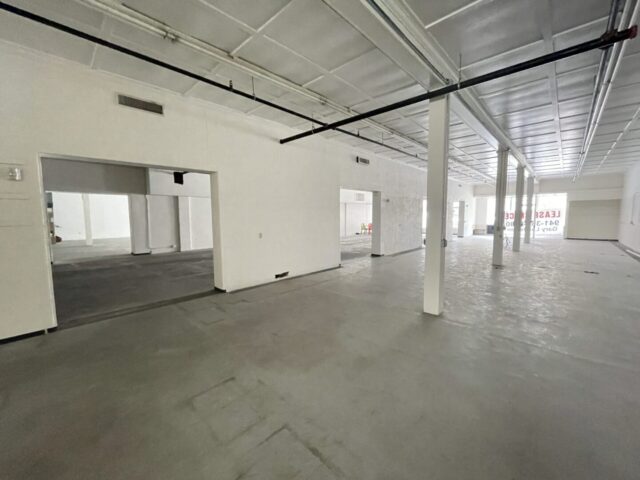When choosing the perfect spot for your commercial space in Manatee County, many factors beyond simple geography should be weighed. It’s not just about picking a busy street; local demographics, zoning laws, and future growth forecasts come into play. You’re looking for a location that draws in foot traffic and aligns seamlessly with your business vision and operational needs. How do you sift through the data and make a decision that guarantees long-term success? Let Adkins Building and Construction help you explore the critical elements that should guide your choice and discover some common pitfalls to avoid. What might you be overlooking?
Importance of Strategic Location

Selecting a strategic location to build your commercial space dramatically impacts your business’s visibility, accessibility, and alignment with target demographics, ultimately shaping its success and growth. You must consider how important your business will be to potential customers. A highly visible location effortlessly increases foot traffic and brand awareness. Consider the ease of access for clients and staff; a spot near major roadways or public transport can significantly enhance your business’s accessibility.
Furthermore, understanding the demographics of the area where you’re considering setting up shop is vital. You’ll want to ensure the local population matches your target market. This alignment between your business and its surrounding community enhances customer base potential and supports effective marketing strategies.
Besides, the interactions between neighboring businesses should be considered. Are they complementary or competitive? Being near businesses that complement yours can lead to beneficial partnerships and increased customer referrals, whereas direct competitors nearby could impede your growth.
Lastly, always plan with an eye on the future. Your initial choice should offer flexibility for expansion as your business grows. Shorter lease terms or options for expansion into adjacent spaces can safeguard your growing business needs without necessitating a costly move. Choose wisely; the right location is a cornerstone of your enterprise’s success.
Understanding Zoning and Regulations
You must thoroughly understand the zoning laws and regulations specific to your chosen location to guarantee that your commercial space complies with legal standards and maximizes functionality. Zoning laws dictate how to use the land, what structures you can build, and the nature of any business operations. Not adhering to these can lead to costly violations and even force you to halt your project.
Here are three critical aspects to keep in mind:
- Land Use: Determine if the area’s zoning laws permit your business. For instance, some zones may restrict manufacturing or certain types of retail.
- Building Specifications: Zoning regulations affect your building’s height, size, and proximity to other structures. Ensuring your design conforms to these rules is crucial for legal compliance and operational efficiency when design-building your commercial space.
- Operational Restrictions: Some zones limit operating hours, noise levels, and even the traffic your business can generate.
Understanding these elements helps you avoid legal pitfalls and strategically plan the layout and operation of your business to align with local guidelines. Explore thoroughly the zoning regulations and engage with local authorities to smooth the path for your development project.
Analyzing Local Demographics

To effectively tailor your business strategy, it’s important to analyze local demographics, including population size, age distribution, income levels, and education. Understanding these factors helps you pinpoint your customers, their needs, and how much they’re willing to spend. You’ll grasp the current market and how it might evolve. This foresight is vital for sustaining growth and staying relevant.
By dissecting age demographics, you’ll determine which products or services are more likely to resonate. A younger population might prioritize trendy, tech-driven options, while older demographics may value quality and reliability. Income levels in the area shape your pricing strategy to match local spending power, ensuring your offerings are attractive and affordable to your target audience.
Education levels give insights into the sophistication of potential customers’ needs and expectations. Areas with higher education levels might support more specialized or premium products. Leveraging these demographic insights allows you to customize your marketing efforts, tailor your product line, and even decide on staff training and development.
Evaluating Accessibility and Visibility
After understanding your customers through demographic analysis, you should assess how accessible and visible your commercial space needs to reach them effectively. Accessibility isn’t just a convenience; it’s a critical driver of customer traffic and operational efficiency. Suppose your space is accessible and well-connected by major roadways or public transit. In that case, you’ll likely see increased customer visits and smoother logistics for suppliers and employees.
Here are three pivotal reasons why prioritizing accessibility and visibility can be game-changing:
- Increased Foot Traffic: High visibility locations naturally attract more passersby, converting them into potential customers. This can greatly enhance your sales and improve brand recognition.
- Operational Efficiency: Proximity to transportation hubs ensures that your supply chain and daily commutes are manageable, reducing delays and costs associated with transport.
- Enhanced Brand Exposure: A strategically placed commercial space can serve as a 24/7 billboard for your brand, engaging customers even when they aren’t shopping.
Choosing a location with these factors in mind will align with your business goals and create a compelling presence in the market, laying a foundation for long-term success.
Budget Considerations and Planning
Before delving into the specifics of site selection, you must carefully consider your budget to ensure that your financial resources align with your commercial space needs. The location’s affordability is crucial in determining rent, utilities, insurance, and potential renovations. These costs form the baseline of your budget and greatly influence your choices.
Consider additional costs such as maintenance, taxes, security, and fees. These aren’t just numbers; they’re predictors of your business’s financial health and operational sustainability. You’ve got to compare these costs with your business’s specific needs to ensure you aren’t stretching your finances too thin. Be mindful of potential rent increases and the impact of incentives that landlords might offer. These factors can make or break a location’s financial feasibility.
Assessing the Surrounding Neighborhood
Having established your budget, you must assess the surrounding neighborhood to guarantee it aligns with your business’s safety, culture, and growth needs. This step is crucial for your immediate operational needs, long-term brand image, and expansion plans.
Here are three critical aspects to contemplate:
- Safety and Security: Review online crime reports and local feedback to understand the neighborhood’s safety reputation. Don’t just rely on statistics; walk the area at different times to personally gauge the security situation. Remember, these factors directly impact your employee and client perceptions.
- Natural Hazard Risks: Check if the area is in a flood zone or prone to other natural hazards. Such risks can threaten your physical assets and cause unforeseen disruptions to your operations.
- Cultural Alignment: Ensure the neighborhood’s ambiance resonates with your company’s culture and brand image. A mismatch here can dilute your brand and alienate your target market, affecting employee satisfaction and customer attraction.
Being strategic about your location goes beyond mere aesthetics; embedding your business into a community that enhances its growth and reflects its values. Choose wisely, as the right neighborhood supports and propels your business vision.
Importance of Nearby Amenities
Nearby amenities greatly enhance employee morale and efficiency, making them an important factor when selecting your commercial space location. Consider how proximity to restaurants and cafes not only improves employee satisfaction but also increases productivity. When your team can grab a healthy lunch or a quick coffee, you’ll notice fewer off-site travel times and a more energized work environment.
Access to nearby banks and shopping areas streamlines your daily operations significantly. You’ll save time on errands that might otherwise disrupt the workday, ensuring smooth continuity in your business processes. Additionally, having these amenities close by provides a lifeline for last-minute needs, whether a client meeting or an unexpected office requirement.
Think strategically about the location’s potential for informal client interactions and networking. Convenient spots for lunch meetings can cultivate stronger business relationships, enhancing your company’s reputation and outreach. The ease of gathering necessary supplies from nearby office stores further aids in maintaining an efficient workspace.
Choosing a location with the right amenities nearby isn’t just an advantage; it’s a strategic business decision that enhances productivity, supports daily operations, and contributes to a positive workplace culture. You weigh these factors carefully to ensure your commercial space supports all aspects of your business operations.

Planning for Future Expansion
When planning your commercial space, it’s vital to incorporate scalability to ensure the location meets future business needs. You’ll want to choose a site that suits your current requirements and offers flexibility for growth. This strategic foresight can save you from the costly and disruptive relocation process as your business expands.
Consider the following essential factors to guarantee your chosen location can handle expansion:
- Flexible Lease Options: Look for properties where you can negotiate terms that allow for changes. This might include shorter lease durations or clauses for renegotiating space as needed.
- Availability of Adjacent Spaces: Make sure there are options to acquire additional space without moving. Including a first right of negotiation clause for adjacent spaces in your lease agreement is significant.
- Assessment of Long-term Needs: Regularly evaluate your space requirements against your business growth projections. Planning for potential spatial adjustments within or near your current location can greatly streamline the expansion process.
Navigating Lease Negotiations
To secure a deal supporting your business’s goals, managing lease negotiations requires careful analysis of terms such as rent duration and renewal options. Be strategic in evaluating components and consider pushing for shorter lease terms for flexibility. Also, secure renewal options are available for the right to extend the lease under predefined terms. This protects you from unexpected relocations.
Negotiating tenant improvement allowances is crucial for financial benefits. Customize leased space with these allowances at minimal cost. Be persuasive in securing a substantial allowance reflecting your value to the property.
Clarify maintenance responsibilities and costs upfront to avoid financial burdens. Look into incentives like rent reduction during the initial setup phase for budget flexibility. Seek advice from real estate professionals to navigate negotiations effectively and ensure terms that favor your business’s growth and stability.
Advanced Site Selection Techniques
After refining lease negotiations, you’ll find that employing advanced site selection techniques can greatly enhance the strategic positioning of your commercial space. Let’s explore how you can harness cutting-edge tools to secure the best location for your business.
Here are three innovative techniques to explore:
- Geospatial Data and GIS Technology: Geographic Information Systems (GIS) are used to analyze demographic trends and conduct detailed market analyses. This technology helps you visualize the important socio-economic data for choosing a site that aligns with your target market.
- Drone Technology: Implement drones to conduct aerial surveys of potential sites. This unique perspective provides valuable insights into the topography, existing structures, and the overall suitability of a location, far exceeding what traditional site visits can offer.
- Traffic Flow Analysis: Use advanced software to study the traffic patterns around potential sites. This data ensures your commercial space is accessible and visible, increasing customer footfall and employee convenience.
Choosing the Best Location to Build Your Commercial Space With Adkins Building & Construction
Remember that choosing the right location for your commercial space isn’t just about today’s needs and future growth. By thoroughly analyzing demographics, zoning, and potential for expansion, you’re not just investing in real estate but in your business’s future success. Make a smart choice now—it’s a decision that will pay dividends in the long run.
Adkins Building & Construction, with its commitment to quality, sustainability, and client satisfaction, is uniquely poised to assist you in this crucial decision-making process. With expertise in construction management for residential and commercial projects in Manatee County, Longboat Key, and Bradenton, Florida, we offer a personalized approach tailored to your needs and budget.
By partnering with Adkins Building & Construction, you’re not just investing in a construction firm—you’re securing a trusted advisor dedicated to realizing your vision and ensuring the long-term success of your commercial endeavor. Contact us today!

